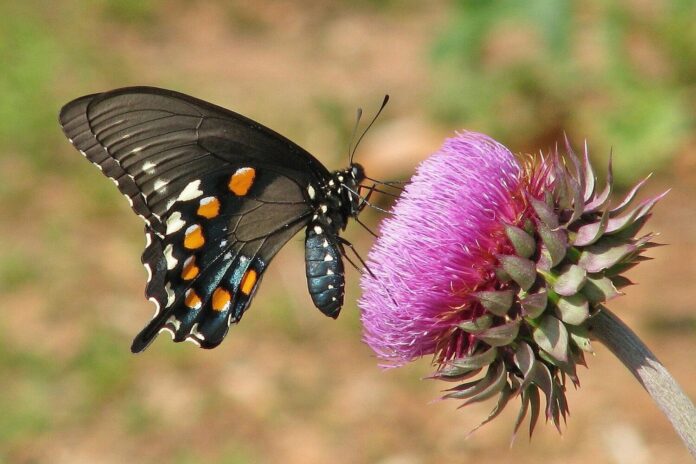During your childhood, you must have been curious about a lot of things, such as trees, plants, animals, birds, doors, and windows. One thing that almost every kid is curious about is a butterfly. You might have got nostalgic after reading the previous sentence.
Butterflies have been a subject of curiosity for many people since childhood. Even during the young age and teen years, many people wonder about the different aspects related to a butterfly’s life. A butterfly is an insect just like bees, caterpillars, beetles, and flies. It can become difficult for you to imagine a butterfly with all these insects together in one room because of the differences between them.
Well, a butterfly is quite different from other insects, and so, it is not perceived to be as harmful as a bee or a fly. Butterflies are seen as beautiful creatures that can make the surroundings pleasant. People love it when they spot a butterfly anywhere. They even try to make the butterfly stand on their hands.
Types And Species Of Butterflies
As we have mentioned earlier, butterflies are insects. They belong to the macrolepidopteran clade ‘Rhopalocera’ from the order ‘Lepidoptera’. They fly using their colorful wings that are large in proportion to their bodies and antennae.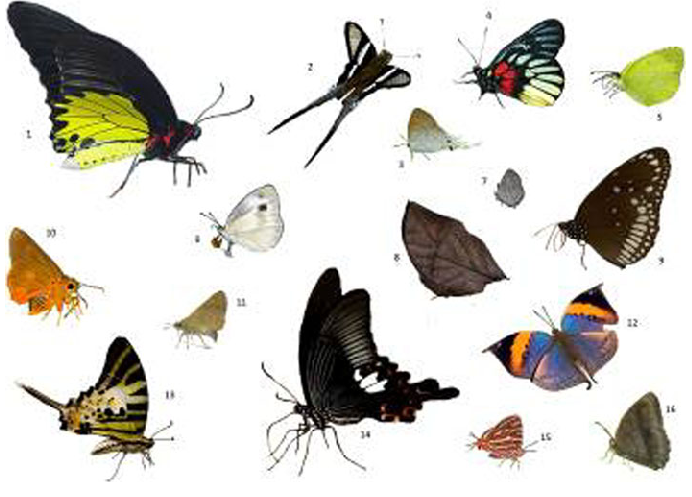
Along with butterflies, the Lepidoptera order also contains moths. This group has more than 1,80,000 known species. Butterflies can be divided into both species and families. There are seven families of butterflies in the world. There are around 17,500 species of butterflies all around the globe. Most species of butterflies are found in Africa, Australia, Asia, and South America.
In fact, butterflies are found on every continent in the world except Antarctica. However, the majority of butterfly species can survive only in warm climates. The remaining species can survive in cold and temperate climates as well.
What Is The Food Of Butterflies? How Do They Eat And Drink?
As we had mentioned earlier, we are now going to discuss what butterflies eat and drink. The primary food source of a butterfly is nectar. Butterflies drink nectar from plants. They get enough energy from the sugars available in nectar. Another source of food for a butterfly is vegetable nectar. Some butterflies also feed on tree sap and mud. Butterflies fulfill their requirement for water from nectar and other things they feed on.
However, at times, butterflies try to get water from other sources. But they cannot land on the water, so they don’t drink water from a fountain, pond, or bird bath. When butterflies need to drink water, they depend on muddy puddles and other sources.
You might be surprised to know that butterflies do not have mouths. You might be wondering, “How come butterflies eat or drink then?”. Well, the answer is ‘Proboscis’. Butterflies have a proboscis that extends from the front of their head. The proboscis is a straw-like tube that coils up when it is not being used. Butterflies use this tube to eat and drink, and thus, satisfy their hunger and thirst.
Various Kinds Of Food
Another sweet food that certain butterflies like is fruit. They particularly like overripe and decaying fruit. How come? Fruit softens and gets more liquid when it begins to rot. Any fruit will do for butterflies to consume. They enjoy receiving bananas, apples, and pears from us. Each piece of fruit is repeatedly poked to make it pleasant and juicy and to provide spaces for the proboscis of butterflies.
Butterflies don’t always eat to be nutritious. Many butterfly species, mostly males, may consume other moist materials like puddles, wet gravel, sweat, scat, and even tears! These butterflies frequently collect salts and minerals to give to the females, which aids in the development of the eggs.
The Huckleberry butterfly, unlike other butterflies, also likes tree sap. Sap from trees like ash, elm, and maple trees is rich in sugar, nitrogen, and minerals. These things offer butterflies a lot of energy and keep them healthy. The sap of the tree must first be exposed from beneath the tree bark in order for butterflies to feed. Other animals must do it for them since they are too weak to accomplish it themselves.
Some butterflies have a five-month feeding span! To achieve this, they eat a lot in the autumn and hibernate through the winter. While they are in hibernation, their bodies slowly consume the additional food that was stored as fat. However, butterflies also obtain the majority of the water they require from their food.
Where Do Butterflies Find Their Food?
Most natural animals, including butterflies, are always looking for food. These are the most typical locations, though they can be found elsewhere.
Flowers: The majority of butterflies’ nectar comes from flowers. They take pleasure in the nectars of both domestic and wildflowers.
Fruit: Fruits that have begun to rot will turn liquid as they decompose. This sweet fruit juice is a favourite of butterflies.
Mud pools: Muddy water is rich in minerals that are essential for a butterfly’s diet. A “puddle club” is a collection of butterflies congregating around a mud puddle. Butterflies need a lot of liquids. Thus they will sip water from gutters or drainage ditches.
Animal dung: When other animals eat fruit, they leave it in their dung. Many butterfly species are happy to drink the liquid surrounding their dung..
Trees: If they are unable to find other liquids, butterflies will sip tree sap.
At Larvel Stage
When butterflies are at the larval stage in their lifecycle, they can eat solid foods, such as leaves. Butterflies that are at the larval stage are known as caterpillars. They eat the host plant on which their older generations laid eggs. Some butterflies eat a small portion of pollen when they try to drink nectar from the flowers.
Food Habits Of Zebra Longwings
However, Zebra longwings eat pollen intentionally. The zebra longwing, whose scientific name is Heliconius Charithonia, is a Neotropical butterfly. It is a species of butterfly that belongs to the subfamily Heliconiinae of the family Nymphalidae. Zebra longings can be spotted in the extreme southern portions of the United States. They have special saliva that helps in breaking down the pollen.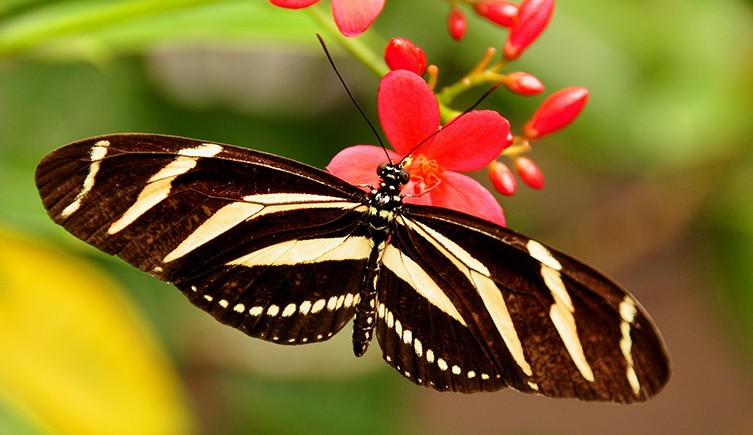
Consuming pollen is beneficial for Zebra longwings as pollen enables them to release Cyanide when they are eaten. Cyanide is a poison that can kill any type of living organism. If a predator eats one of the butterflies that are a part of a flock, it will die before it can try to eat other butterflies from the flock.
Another type of butterfly with a distinct eating habit is the rare harvester. Rare harvester butterflies eat woolly aphids, which are sap-sucking insects. Woolly aphids produce a filamentous waxy white covering that looks similar to cotton or wool. They also secrete a sweet liquid known as ‘honeydew’. Both caterpillar and adult rare harvester butterflies consume woolly aphids.
But only adult rare harvesters have a special short proboscis that allows them to collect the honeydew from the woolly aphids. Rare harvester butterflies are found only in some swamps or woody areas in the United States of America.
Now, let’s see who eats butterflies. Nature consists of a wide range of flora and fauna. Many of them depend on others to survive. In order to keep the ecosystem balanced, a lot of living organisms depend on other organisms for their food.
Therefore, some living organisms eat butterflies to feed themselves. We have already mentioned the names of such organisms earlier in this blog post. Butterflies are consumed as a food source at different stages of their lifecycle. Fire ants and spiders eat butterfly eggs.
What is So Special About Butterflies?
If you remember, we had mentioned how children get curious about butterflies at the beginning of this blog post. Well, it’s important to mention here that not just children, but even adults find butterflies amusing. If you are a movie buff or even if you watch movies occasionally, you must have noticed how the makers show references to the butterflies.
Not just in the world of entertainment, but also in the world of literature, butterflies hold a place of importance. Numerous poems, essays, stories, and other pieces of literature have been written with butterflies as the theme or an integral part.
When characters in movies have to be shown as cute and friendly, they are often shown as playing with butterflies or running after butterflies. Some movies even have butterflies in their titles, for example, ‘The Butterfly Effect’, ‘Butterfly on a Wheel’, and ‘Butterflies are Free’. The movie ‘Flight of the Butterflies’ was based on Monarch butterflies.
The monarch butterfly, which is also simply called monarch is a milkweed butterfly in the family Nymphalidae. It is a large butterfly that is easily identifiable due to its striking orange color. Similarly, the movie ‘Wings of Desire’ had butterflies as the main plot. Butterflies have been a source of inspiration for poets, authors, painters, and other artists. Paintings that contain one or more butterflies are common.
Butterflies have some of the most striking color displays that can be found in nature. They are also symbolic in the world of mysticism. Some people believe that butterflies are the sign of angels. They consider the spotting of a butterfly as a blessing from angels.
How Do A Butterfly’s Wings Get Their Color?
If you have ever noticed, you would know that the attention of a lot of children gets drawn to the pictures of a butterfly in children’s books. Unlike other insects, butterflies capture the attention of people not due to fear but due to excitement. People don’t scream or run away when they see a butterfly. They want to spend as much time as possible looking at the butterflies.
The size of a butterfly can range from 1/8 inch to 12 inches. They have two sets of wings – forewings and hindwings. The wingspan of a butterfly is 3 to 4 inches. The wingspan is the distance measured across the wings of a butterfly. The wings of a butterfly are a sheet of scales that are just one cell thick. These scales are separated by air.
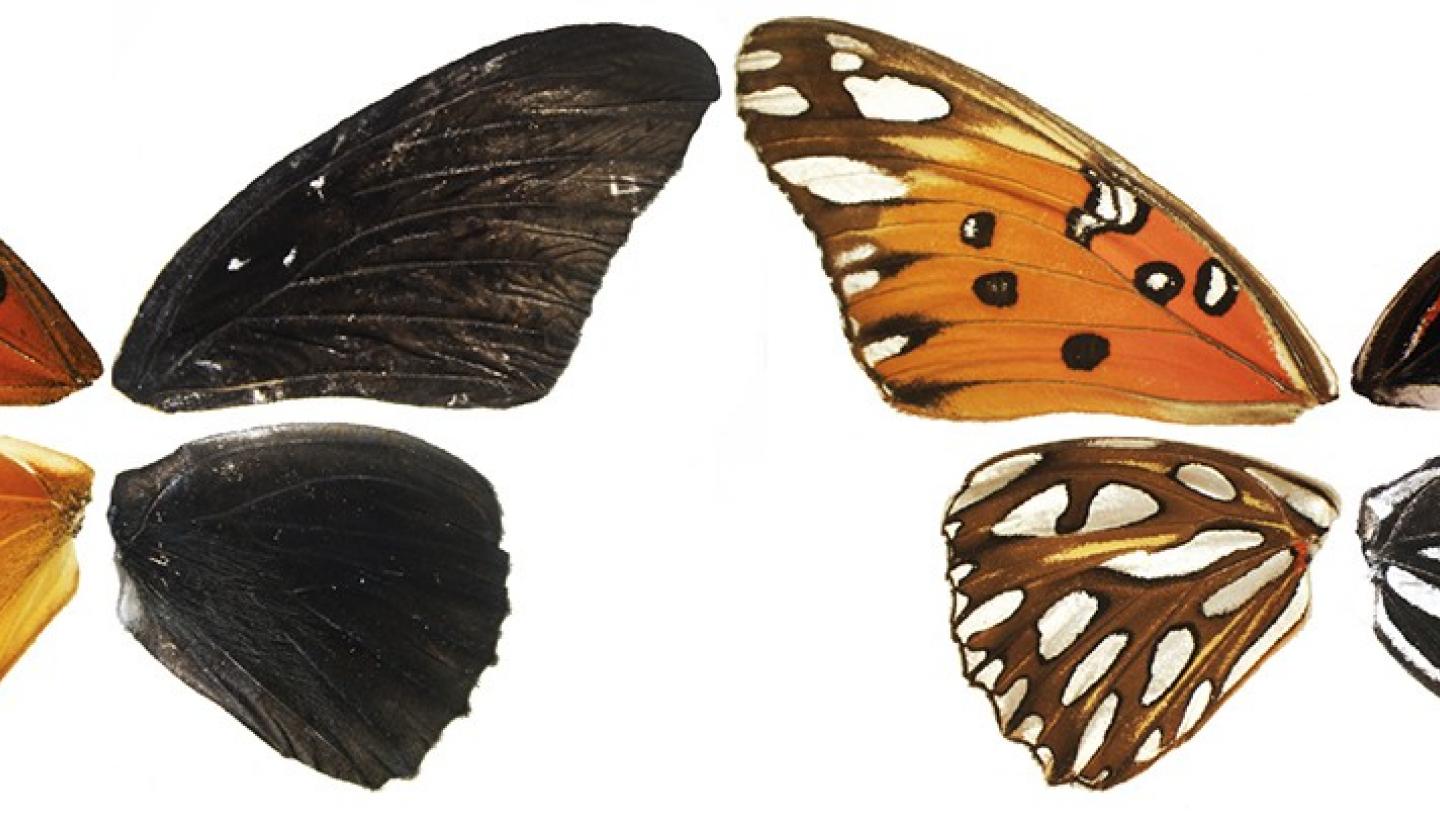
Butterflies are one of the most popular insect species in the world. One of the reasons behind their popularity is their colorful wings. However, there is an interesting fact behind the colors of a butterfly’s wings. Let’s see what it is. The wings of a butterfly are translucent and covered with scales. The wings get their color from the scales. When the light reaches the wing of a butterfly, it passes through multiple layers of scales.
Thus, the color of the wings of a butterfly is the result of the combination of these reflections. The wings of butterflies contain melanin, which is the same coloring pigment found in human skin. The pigment of the wings of a butterfly is yellow, orange, and black.
But you might be thinking, “I just saw a purple butterfly yesterday”. The colors you see on a butterfly’s wings are green, blue, yellow, and a combination of the three. The wings of a butterfly have intricate patterns. They have large round markings, which are often called ‘eyespots’. These eyespots help butterflies stay safe, as they make butterflies seem big and dangerous to predators.
How Do Butterflies Benefit The Environment?
Butterflies are not just beautiful but also useful. They play an important role in the environment by pollinating flowers. A pollinator carries pollen from the male part of the flower to the female part of the same or another flower. Pollination is necessary for reproduction in plants. It helps plants reproduce seeds for dispersal and propagation.
Organisms that carry out the activity of pollination are called pollinating animals. Butterflies, bees, birds, bats, moths, wasps, flies, and wasps are some of the pollinating animals. They sit on flowers in order to look for nectar and pollen. Nectar and pollen are foods of pollinators.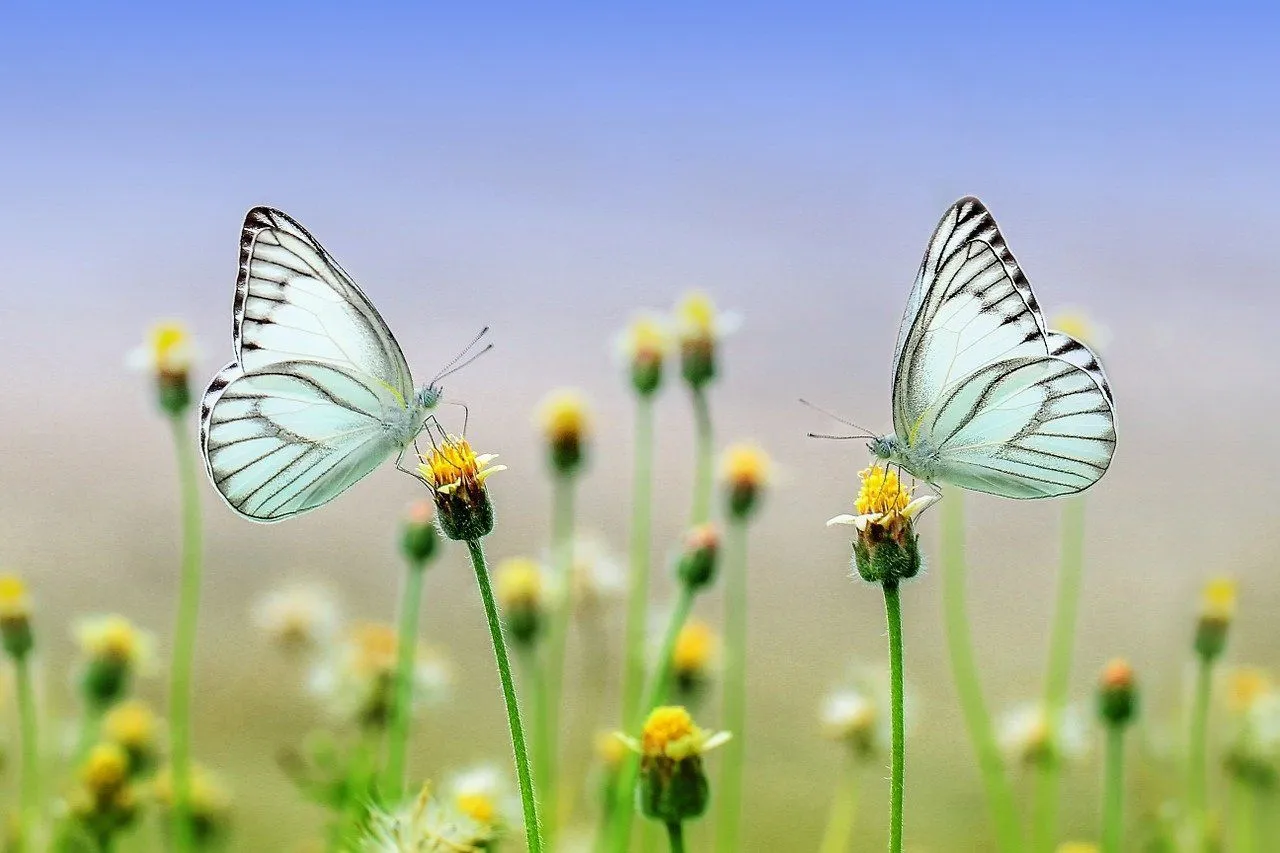
Pollination leads to the production of seeds and fruits, which then leads to the production of plants that are produced from agriculture. Pollinating plants is responsible for making available one of every three bites of food to human beings. Hence, it’s simple to understand how butterflies are beneficial for the environment. They help in increasing the biodiversity of an ecosystem.
But along with being contributors to the ecosystem, they are also indicators of the ecosystem. The presence or absence of butterflies is used as an indicator to determine whether an ecosystem is healthy or not. If you are wondering, “Why is it so?”, let us tell you that butterflies are quite sensitive to changes in the environment.
For example, if the population of butterflies increases, it is considered to be a result of an increase in plant diversity. Another way in which butterflies contribute to the ecosystem is that they act as a food source for other living organisms, such as birds, dragonflies, wasps, lizards, snakes, rats, and monkeys.
But have you ever wondered, “What do butterflies eat?”. If not, there is no need to fret over it, as we have shared some essential information on what butterflies eat in this blog post. We will also share the details regarding who eats butterflies at different lifecycle stages. Butterflies go through four lifecycle stages. We will even discuss the lifecycle of a butterfly.
Some Interesting Facts About Butterflies
Now that you have read about the lifecycle, eating habits, species, and many other aspects related to the lives of butterflies, let’s have a look at some of the most interesting facts about butterflies. You might not have heard of these facts before, so be ready to get surprised.
➢ Butterflies Taste With Their Feet
Just like all other living organisms, butterflies also have taste receptors. But as you already know, butterflies don’t have mouths. So, their taste receptors are located on their feet. Butterflies use their taste receptors to detect which flowers have sweet nectar.
Female butterflies use their taste receptors to detect the beneficial and harmful elements of different plants to choose the most suitable plant for laying eggs. It’s worth mentioning here that taste receptors work only in female butterflies in some butterfly species.
➢ Butterflies Can’t Fly When They Are Cold
Butterflies can fly only when the temperature of their bodies is high. They need to have a body temperature between 35 degrees Celsius and 40 degrees Celsius if they want to fly. When they are not flying, they need to maintain a body temperature of 20 to 50 degrees Celsius.
If the body temperature of a butterfly goes below 7 degrees Celsius or rises above 50 degrees Celsius, it cannot move or fly. Butterflies have cold blood, so it’s difficult for them to maintain a high body temperature. Butterflies keep themselves warm by spending their time in direct sunlight.
➢ A Few Butterfly Species Migrate From The Cold
As we have discussed in the previous fact, it’s impossible for butterflies to fly when they are cold. Cold weather reduces their body temperature, which in turn makes them immobile. Butterflies can fly optimally when the air temperature is between 27 and 37 degrees Celsius.
So, some species of butterflies migrate to other places when the weather starts getting cold in their habitat. They migrate to places where air temperature can allow them to maintain an ideal body temperature so that they can move around easily.
➢ Butterflies Have Skeleton Outside Their Bodies
You might find it strange, but butterflies have skeletons outside their bodies and not inside their bodies. As the skeleton of a butterfly is located outside, it is called the exoskeleton. Made from a bone-like material called chitin, the exoskeleton protects butterflies.
The exoskeleton keeps the water inside the body of a butterfly so that it does not dry out. It encases the soft tissue of a butterfly. Butterflies don’t have bones inside their bodies. The exoskeleton acts as an external skull for a butterfly, and thus, protects its delicate parts.
➢ Queen Alexandra’s Birdwings Are The Biggest Butterflies
As you are aware now, there are thousands of species of butterflies all around the world. The butterfly species that is the biggest or largest in size is ‘Queen Alexandra’s Birdwing’. The wingspan of butterflies belonging to this species is around 25 to 28 centimeters.
Found only in the rainforests of eastern Papua New Guinea, Queen Alexandra’s Birdwing is an endangered species. Butterflies of this species can pollinate bigger plants due to their big size. The largest recorded specimen of this species has a wingspan of 27.3 centimeters.
➢ Western Pygmy Blue Butterflies Are The Smallest Butterflies
Now that you know which butterfly species is the largest in size, it’s time to know which butterfly species is the smallest in size. Western Pygmy Blue butterflies are the smallest butterflies in the world. They have a wingspan of around 1.3 centimeters.
The butterflies belonging to this species are brown or copper in color, but when they open their wings, they appear blue in color. Western Pygmy Blue butterflies are native to the American southwest. They are mostly found in alkaline areas, such as deserts and salt marshes.
➢ The Painted Lady Butterflies Migrate the Longest
The butterflies belonging to the Painted Lady species migrate the longest distance compared to the butterflies of other species. They migrate from Europe to subtropical Africa. They carry out this migration in order to live in favorable climates.
The painted lady butterflies can be found all over the world except in South America and Antarctica. As per a study, these butterflies also do reverse migration when the climate changes. Their migration distance is the longest, not just in the category of butterflies but also in other insects.
We are sure that after reading the above-mentioned facts about butterflies, you must have started seeing them in a new light. We have already explained how butterflies are important to maintain the ecosystem and environment. If you have a garden within the premises of your home or workplace, you should attract butterflies to get the benefits these tiny creatures can provide.
You can take some steps to attract butterflies to your garden. You can start with growing plants whose flowers have sweet nectar. Butterfly weed, lantana, pot marigolds, heliotrope, and lavender are some examples of such plants.
Insecticides will keep butterflies away, so if you want to bring butterflies to your garden, you should eliminate or minimize the use of insecticides. You might notice some damage to your garden when you don’t use insecticides, as caterpillars (i.e., butterflies at the larval stage) provide damage to plants. You can grow plants that female butterflies of different species prefer for laying eggs.
Final Thoughts
We are sure that you must have enjoyed reading this blog post on butterflies. Some of the information might be difficult to believe, but just like every other living being nature has ever made, butterflies also have their unique traits and quirks.

